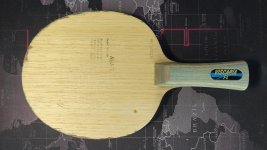This user has no status.
This user has no status.
Well-Known Member
Hey LDM - good to hear from you..How do @Wrighty67
it's funny when you reference your pinga ponga facility as the "shed," kind'a have a back to the drawing board, put your nose to the grindstone tonality - I like it
i've been dedicating myself improving different parts of my game, in time, i am confident each will be more friendlier to another, pulling all the pieces together
i've also been thinking about your earlier post (about a week or two ago) on playing relaxed - none strike more of a chord than at my lesson today ... the difference in seeing balls early (anticipate better), moving towards the ball path, establish strike zone & ball quality (pace, spin, location, timing)
unfortunately when i only focus on that "relaxed" feeling, quality dwindles
one reason = i am trying to get another ball back to repeat that "relaxed" feeling, @Der_Echte calls it patty cake
to capture that relaxed sensation and remember what it feels like executing a different sort of hand/eye activity, i've started juggling (3 ball cascade) as one of my off-the-table training routines
so how's it going with being able to play more relaxed? are you able to play more relaxed and less tight over the past few sessions?
I haven't played anything competitive since Monday. I had a terrible time against 3 decent players, but all of whom I could beat if playing well - I lost all 3 and largely it was being too tight and being too close to the table (poor footwork) - I have posted one of the matches below for your viewing pleasure (it fills me with horror when I see it)
I am scheduled to go through all 3 videos with my coach on Friday and work on some action points, but it's clear I am very tight on both wings and also on serve return. In my first match I gave away 5 points in game 1 on serve return, and still got to 11-10 up before missing an easy FH to win the game (and then losing it 14-12) - that was the story of my night.
I have enjoyed the videos posted on the other thread (KTS coach shows..." and will be working on my relaxation in coming weeks. I have been doing some ball drills off table (turning ball from FH/BH side of rubber in a rolling motion etc)
I was very low after Monday - felt lost, but back at it now..
Keep fighting..
Here's one of my matches;












